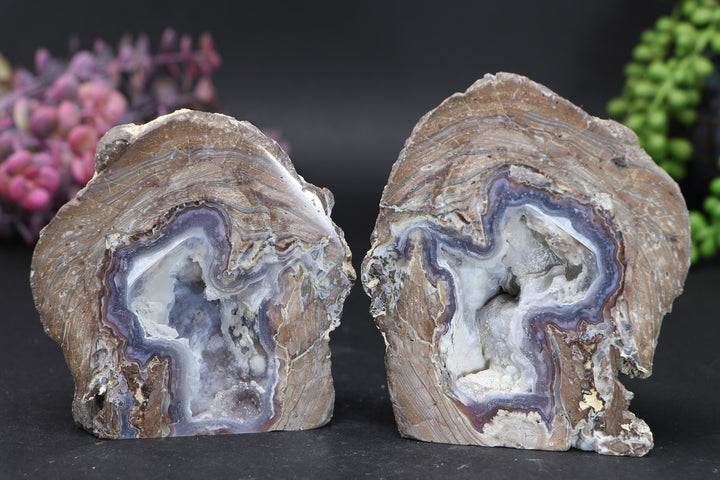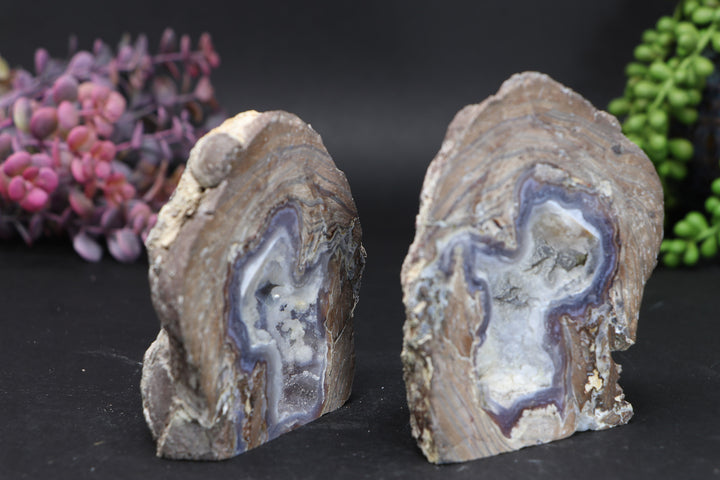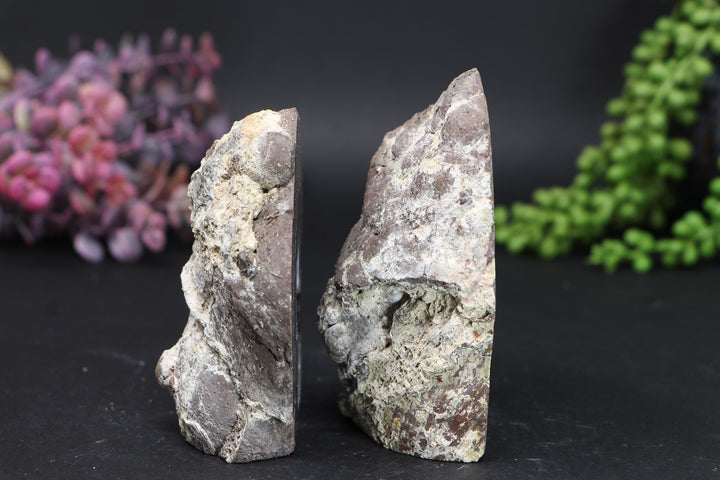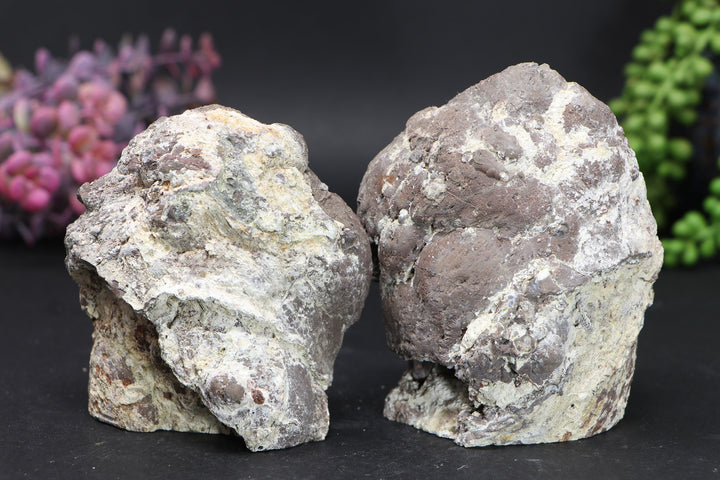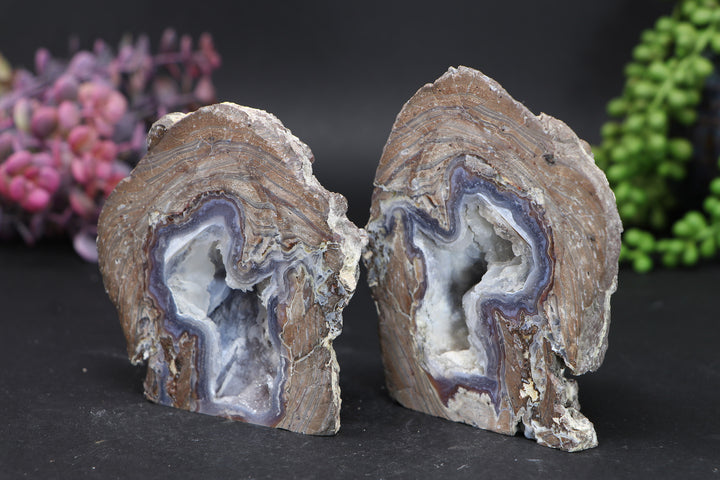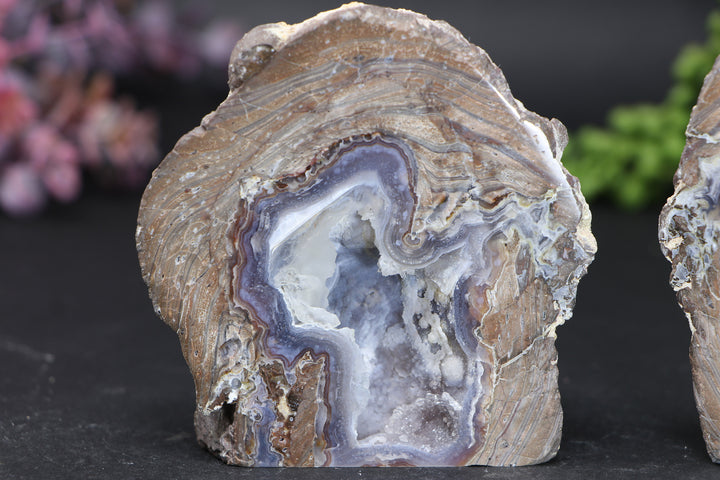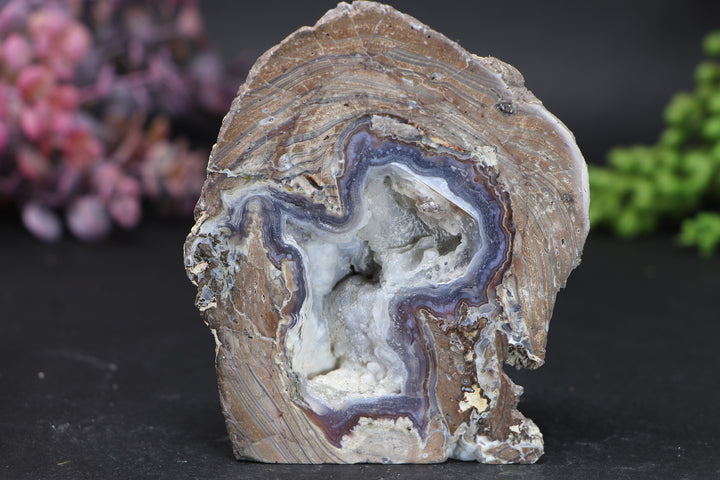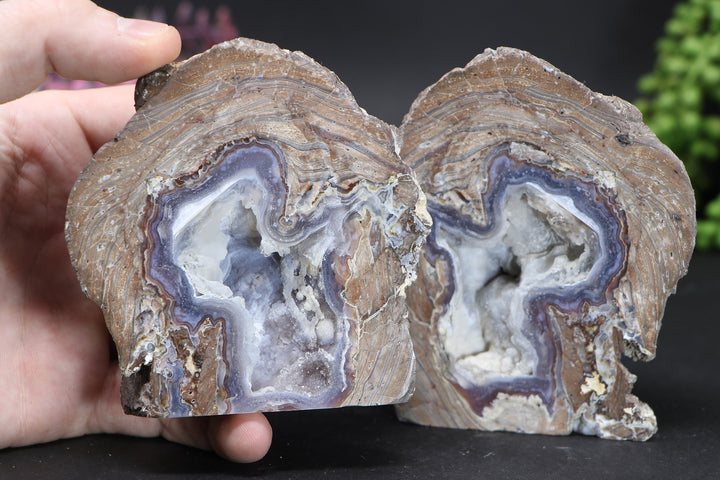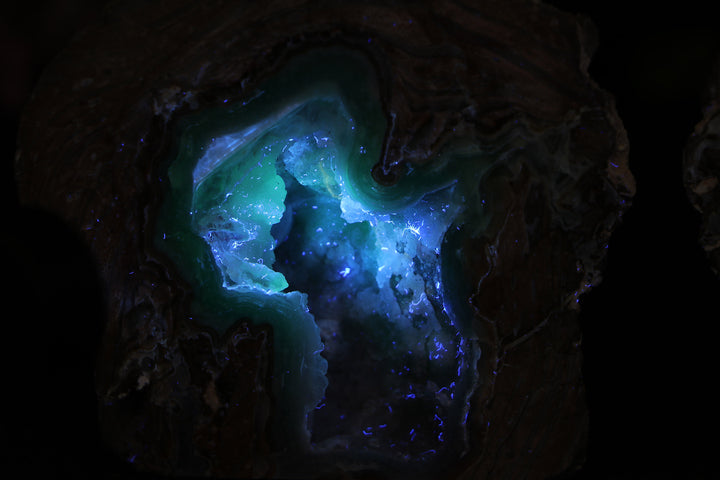Store-wide markdowns20-50% off most items! FREE US Shipping over $100!
Dugway Geode Pair
Approx. Dimensions: 3.5 x 4 x 1.75", 3.5 x 3.5 x 1.5"
Approx. Weight: 628 grams (total)
Locality: Dugway Geode Beds, Juab County, Utah
This piece reacts to long-wave ultraviolet light, shown in the last photo. Many portions of the inside of the geode glow a vibrant green.
Approximately 6 to 8 million years ago (Miocene epoch), volcanic activity occurred in western Utah and deposited an extrusive igneous rock called rhyolite. Trapped gasses formed cavities within the rhyolite, and millions of years of ground-water circulation allowed minerals to precipitate into the cavities. The result is geodes with spherical shapes and crystal-lined cavities. Roughly 32,000 to 14,000 thousand years ago, a large body of water known as Lake Bonneville covered most of western Utah. The lake’s wave activity eroded the geode-bearing rhyolite and redeposited the geodes several miles away in the Dugway geode bed area as lake sediments. Most geodes are typically hollow whereas others are completely filled with massive, banded quartz. The most common mineral found within the geodes is quartz in various colors: clear (rock crystal), purple (amethyst), and pink (rose).
(Source: Utah Geological Survey)
All orders ship within 24-48 business hours. Shipping options and prices are calculated at checkout.
Returns are accepted within 14 days of delivery. Items must be returned in new/unused/undamaged condition to receive a full refund. Please contact us if you need to return an item.




